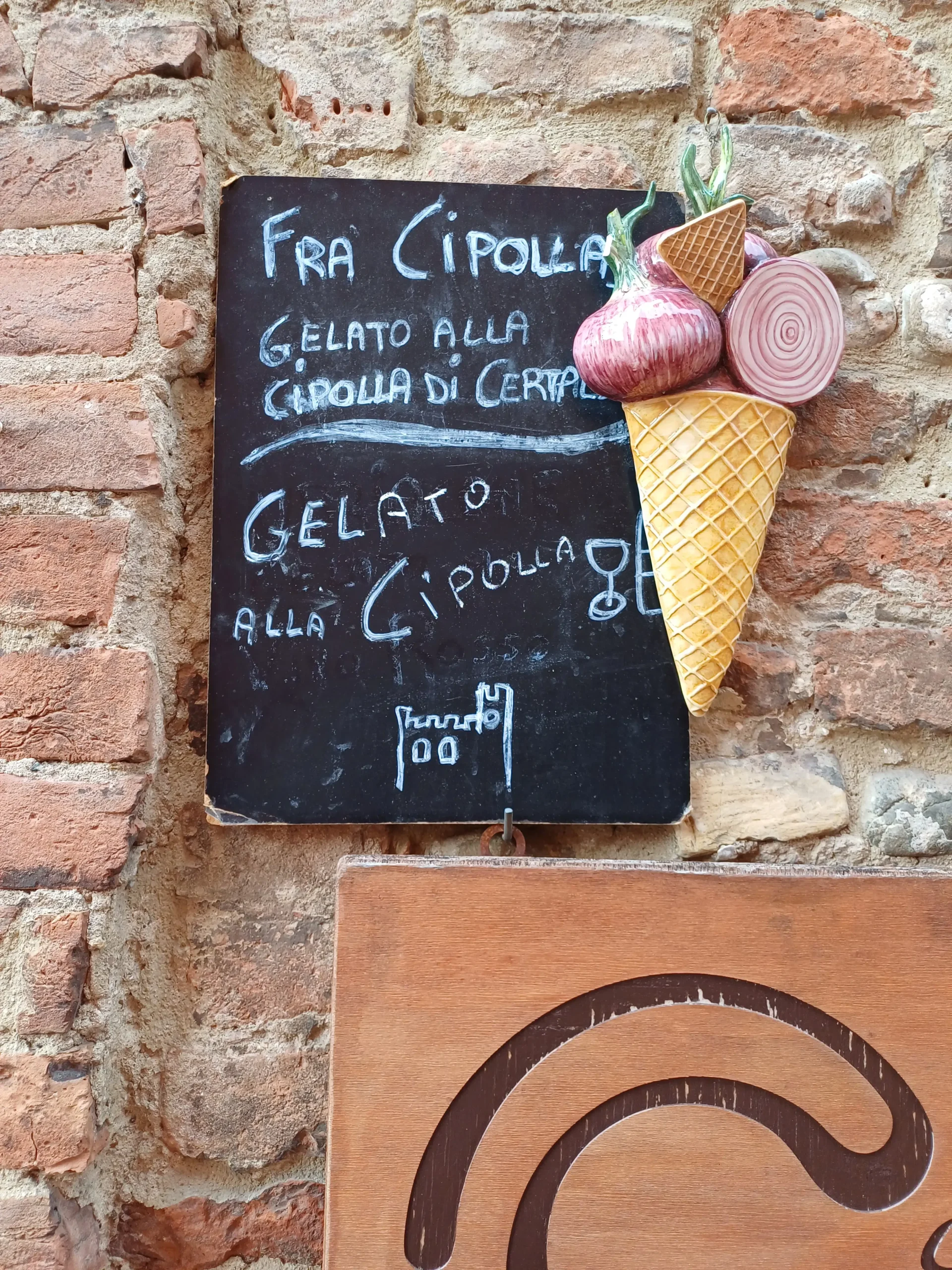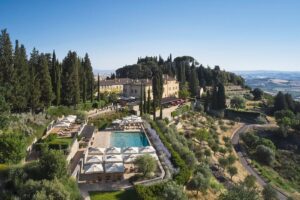Discover Certaldo, the Medieval Tuscan Village of Boccaccio and the Onion
Disclosure: This page contains affiliate links. If you make a purchase through these links, I may earn a small commission to help me support my blog.📝
Certaldo is a small town nestled in the hills of the Val d’Elsa, about one hour away by train or car from the bustling city of Florence. When you first arrive in Certaldo, it looks like a normal Italian 20th-century town. But that’s because you are in Certaldo Basso, in the valley. Certaldo, in fact, is split into Certaldo Alto and Certaldo Basso. The medieval gem is Certaldo Alto, steeped in history and poetry, also the place often associated with a great poet, scholar, and writer—Giovanni Boccaccio—and the red onion, a local specialty.
Certaldo is an ideal day trip or weekend escape from Florence, offering an exceptional and unforgettable medieval experience:
- Explore Boccaccio’s history and poetry
- Soak up stunning views of Val d’Elsa
- Taste local specialties such as onion dishes
- Experience medieval life for yourself!

Credit: Toscana.info
Certaldo Alto is a fortified hamlet that has been under Florence’s rule since 1184. Its urban layout preserves the medieval design, with a wide main road that also served as a ‘piazza’. Certaldo gained economic importance between the 13th and 15th centuries after the Elsa River was drained and the city expanded along one of the new sections of the Via Francigena in the valley.
The renowned Florentine writer Giovanni Boccaccio, whose family came from Certaldo, spent his final years there in the 14th century.
Certaldo lies about 35 kilometers southwest of Florence and can easily be reached either by car or train. Travel by car along the A1 highway from the Firenze Impruneta exit, following signs for Siena to the Poggibonsi Nord exit, and follow signs to Certaldo, which is approximately 15 km (10 miles away). If traveling by train, you can take the regional train from Florence Santa Maria Novella station and arrive in Certaldo one hour later; from its lower station take either a funicular railway or walk uphill until reaching the upper part.
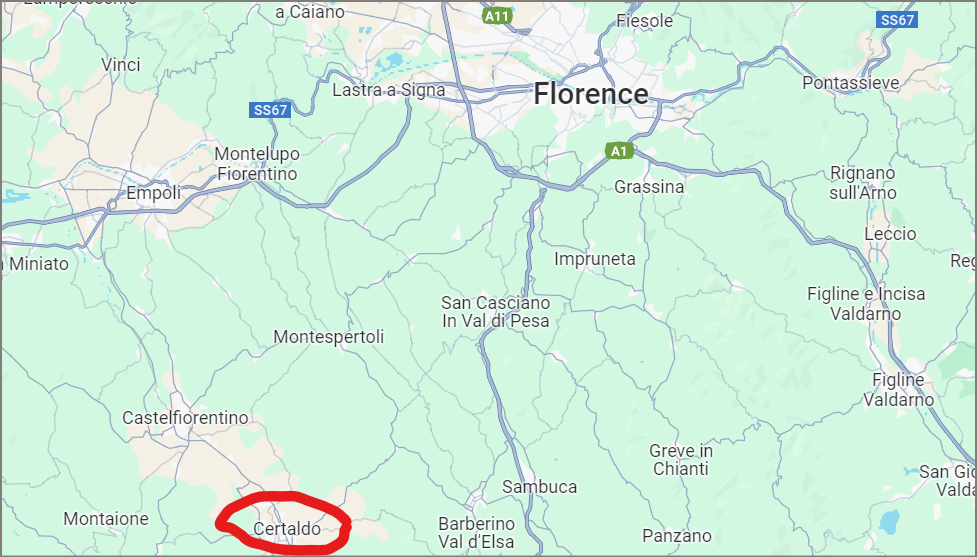
Credit: Google Maps
Certaldo Alto and Basso
Certaldo is divided into two parts: the lower, modern part, where you can find shops, restaurants, and services, and the upper, ancient section, which is a perfectly preserved medieval village, surrounded by walls and accessible by a funicular railway or on foot.
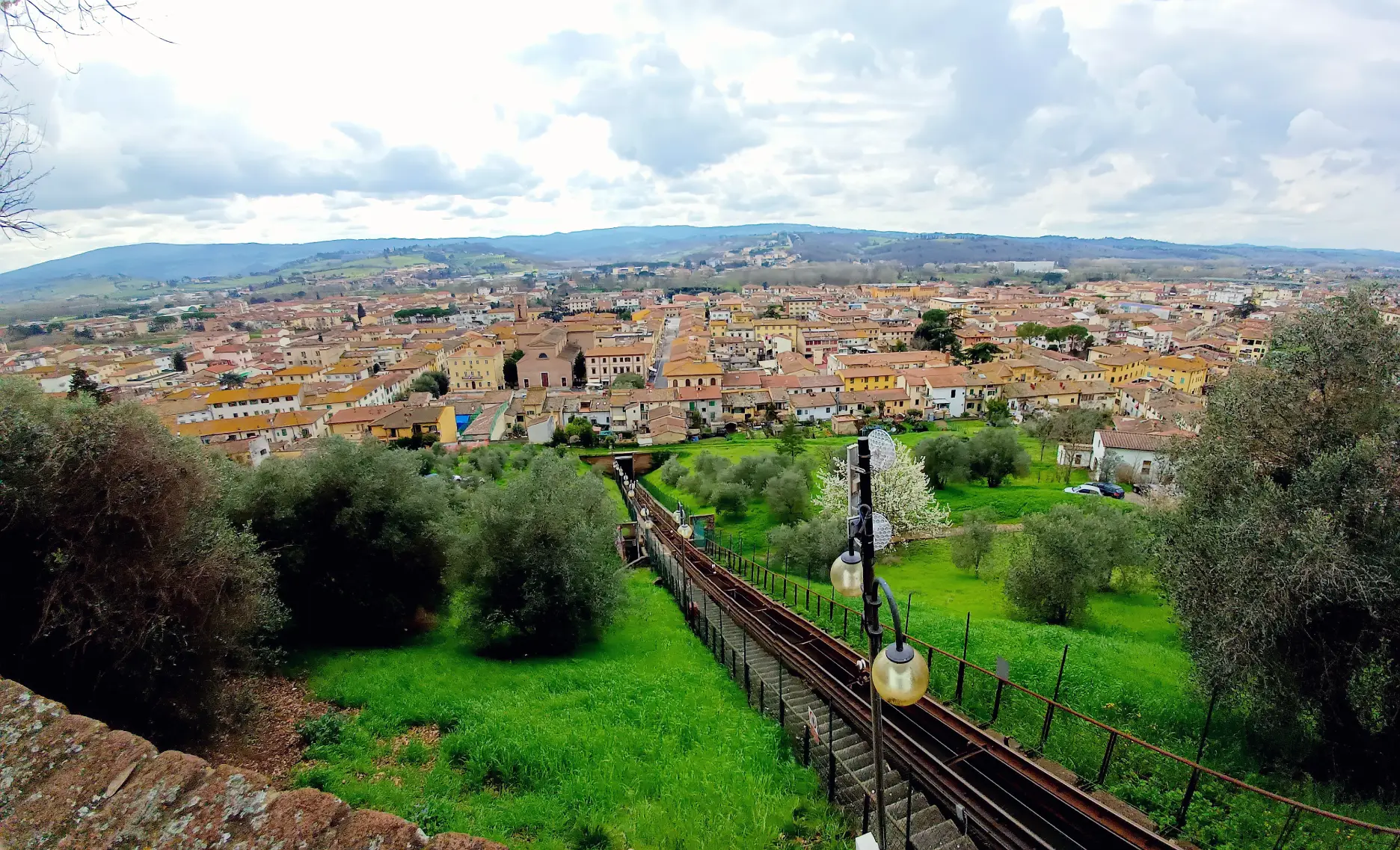
Funicular. Credit: tuscandreamvacations.com
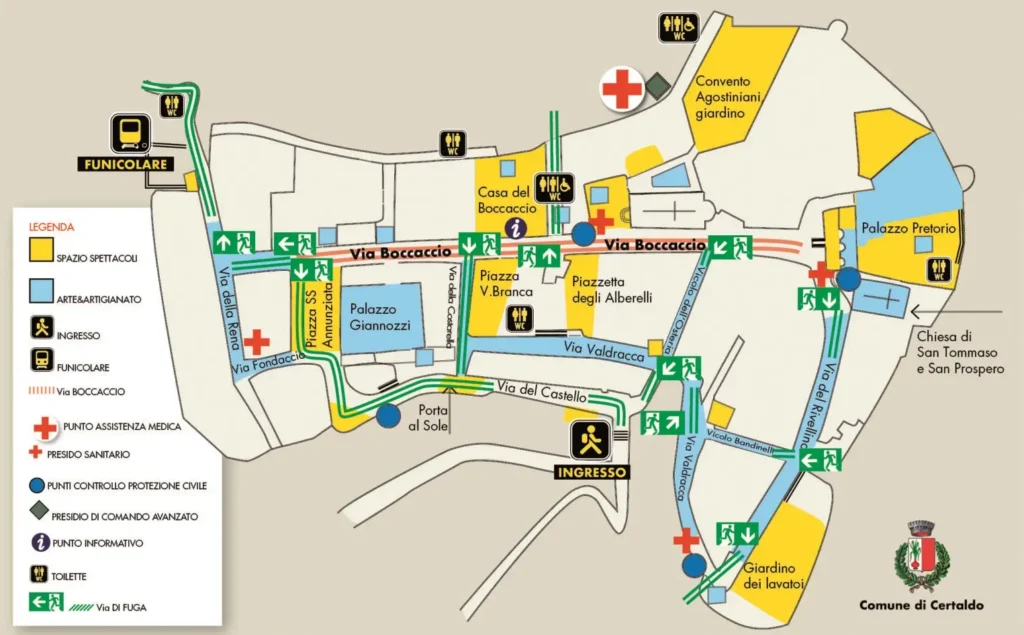
Credit: Comune di Certaldo
Architectural Marvels: Palazzo Pretorio
Certaldo boasts a harmonious blend of medieval and Renaissance architecture, creating a visually stunning panorama for those who explore its streets. One of the most striking buildings in Certaldo Alto is the Palazzo Pretorio, which dates back to the 12th century and was the seat of the local government. Built on the remains of an ancient castle, its imposing structure, adorned with a crenelated tower, stands as a reminder of Certaldo’s historical significance. The palace is decorated with coats of arms in stone and glazed terracotta and houses a museum with artworks by Pier Francesco Fiorentino, Benozzo Gozzoli, and other Tuscan artists.
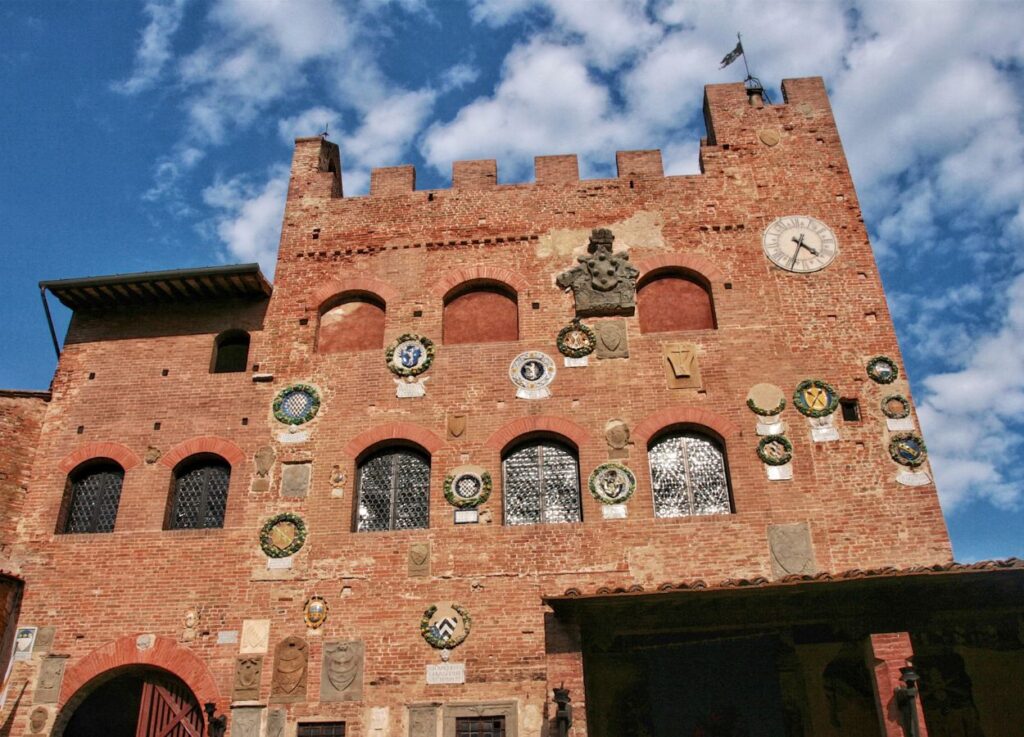
Palazzo Pretorio. Credit: Tuscandreamvacations.com
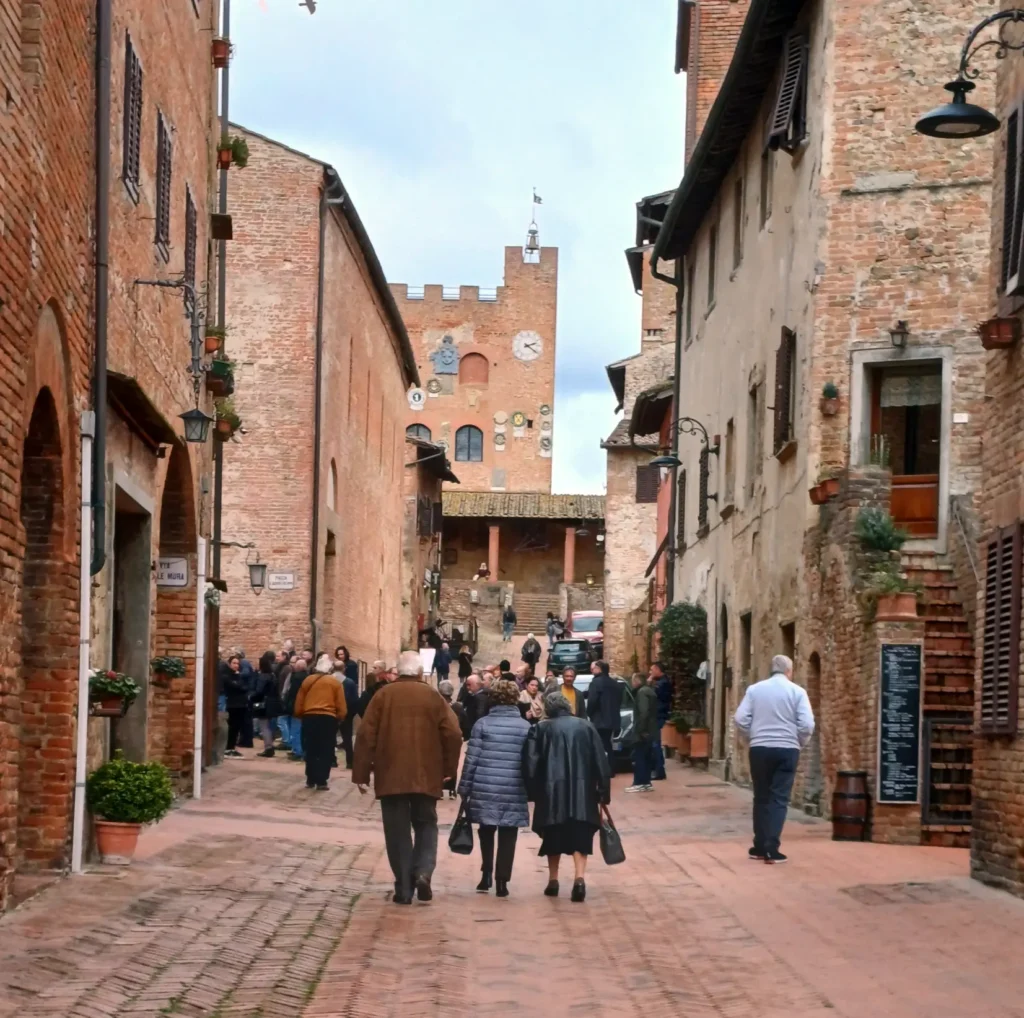
Certaldo Alto Main Street. Credit: Tuscandreamvacations.com
Palazzo Stiozzi Ridolfi
Palazzo Stiozzi Ridolfi is a splendid complex consisting of a palace and two towers, with an inner courtyard. It was built in the 13th century by the Stiozzi family, who were prominent bankers and merchants in Certaldo. The palace was later inherited by the Ridolfi family, who added some Renaissance elements to the facade and the interior.
Nowadays, you can even stay overnight in one of the enchanting rooms for rent for under $400 per night.
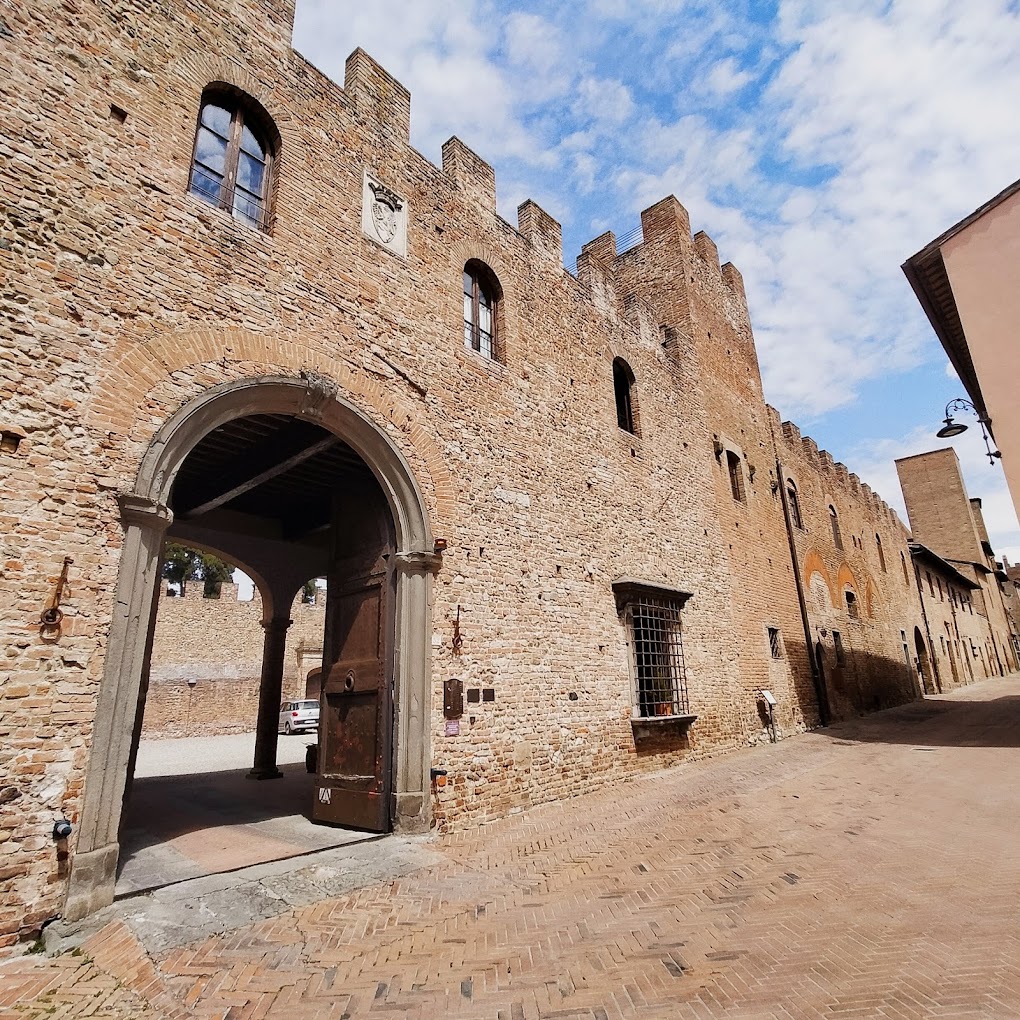
Credit: Google
Hidden Charms in Cobblestone Streets
As you wander through its cobblestone streets, you’ll discover a magical atmosphere that has been meticulously preserved over the centuries. It’s no wonder that Certaldo has earned the prestigious Orange Flag from the Touring Club of Italy.
Another must-see attraction is the House of Boccaccio, the author of the Decameron, a masterpiece of Italian literature.
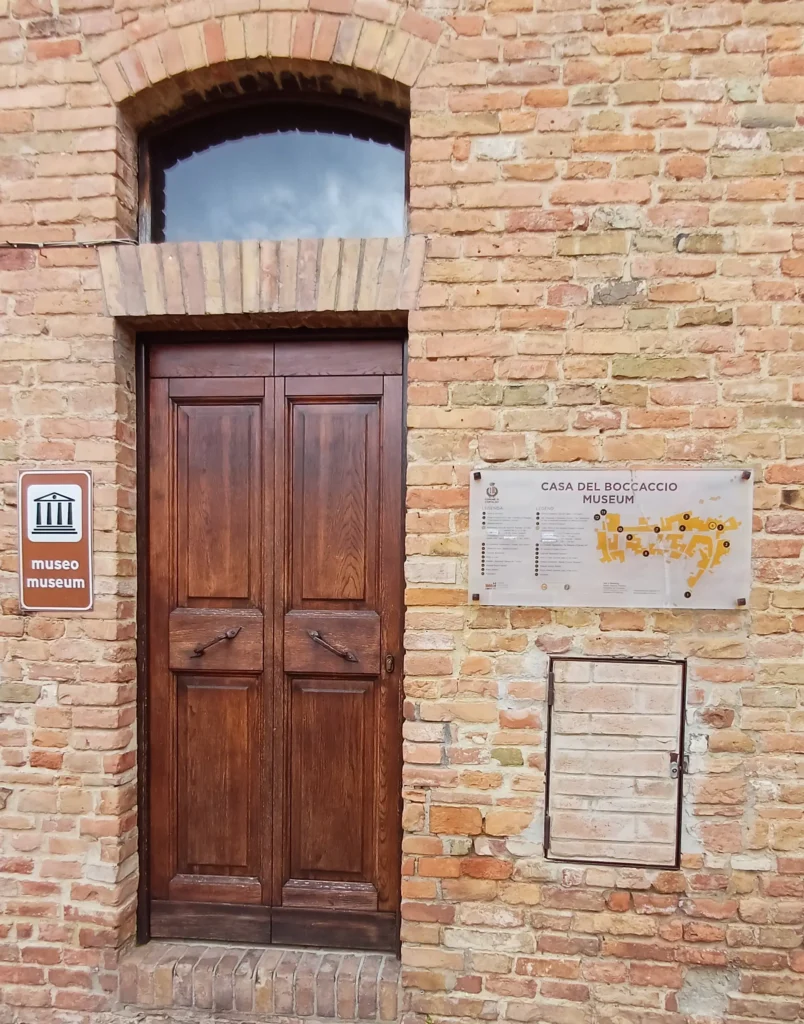
House of Boccaccio Museum. Credit: Tuscandreamvacations.com
Boccaccio’s Birthplace
Boccaccio’s house, rebuilt after the war, preserves ancient furnishings, a study center, and a library with several editions of the Decameron. You can also visit the church of SS. Michele and Jacopo, where the remains of Boccaccio are buried, admire the frescoes depicting scenes from his life and miracles. This is not just any museum; it’s the presumed birthplace of Boccaccio himself. Reconstructed after wartime damage. Immerse yourself in the ambiance of 1313 as you explore the house adorned with ancient furnishings, a study center, and a library boasting several editions of the Decameron.
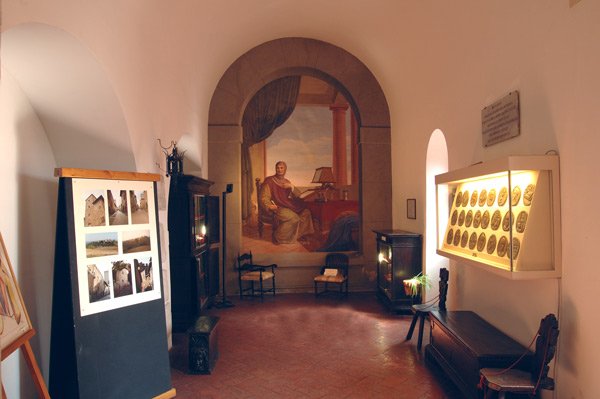
Credit: toscananelcuore.it
A walk through the streets of Certaldo reveals surprising views of the Val d’Elsa, the valley that stretches between the Apennine mountains and the Tyrrhenian Sea. Let yourself be guided by curiosity along the alleys that overlook Via Boccaccio, discovering breathtaking panoramas and the local cuisine, characterized by the famous Certaldo onion.
The Nail Museum
For those passionate about craftsmanship, an exciting destination worth experiencing is the Nail Museum.
The Nail Museum stands out as an exceptional exhibition space exhibiting an eclectic selection of nails in different shapes and sizes as well as tools evoking peasant culture and intricate wood sculptures.

Credit: Visitcertaldo.com
Giancarlo Masini, also known as Beppe Chiodo, created The Nails Museum which provides a fascinating journey through the evolution of nails. Exhibits range from ancient Roman and Etruscan nails, decorative villa door nails found today, and wooden carvings depicting nails as art objects made with materials such as pumice stone, wax, or cork to contemporary creative reinterpretations featuring wooden nails with pumice, wax, or cork nails incorporated in them, plus artwork featuring pumice, and glass beads.

Credit: Tuscandreamvacations.com
The museum boasts an extensive collection of woodworking tools, providing visitors with insight into traditional crafts. Anecdotes and drawings depicting professions where nails were indispensable further enhance our visitors’ understanding of these everyday objects’ historical importance.
Certaldo Onion
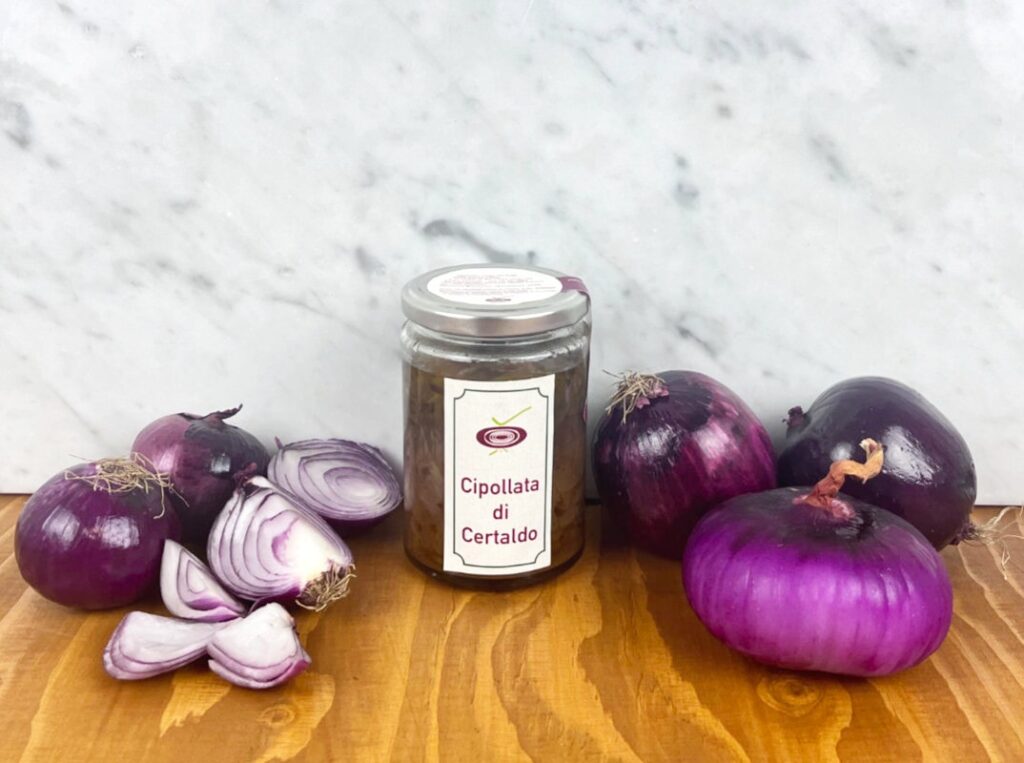
Credit: PassioneToscana.com
Certalto is also famous for its red onion. This onion, which has a sweet and delicate flavor, is the main ingredient of many dishes, such as soups, pies, jams, and sauces (and even gelato!). The red onion of Certaldo also appears as the vegetable symbol of the town in its old coat of arms. You can taste it in one of the many restaurants and taverns that offer traditional and creative recipes, accompanied by a glass of Chianti wine.

Gelateria in Certaldo Alto. Credit:Tuscandreamvacations.com
The Certaldo onion comes in two distinct varieties. Statina onions feature round shapes with purple hues and juicy flesh; Vernina varieties boast red colors with spicy flavors for an additional zest in local cuisine from August through winter harvesting seasons.
Notably, the celebrated writer Boccaccio included references to Certaldo onions in Book VI of his Decameron; thus emphasizing their importance both culturally and gastronomically in their region.
Certaldo Onion Dishes
Versatile in its applications, Certaldo onion “marmalade”—aptly named “La marmellata di Cipolle di Certaldo—makes an excellent accompaniment for cheeses, boiled meats, pork, or game, providing each bite with its unique blend of flavors. Furthermore, its versatility extends even into desserts made with berries to produce irresistibly delectable delights sure to please. Experience its culinary magic as each dish becomes a celebration of regional flavor profiles and modern culinary artistry!
Since 2000, Chef Sara Conforti of Osteria del Vicario restaurant and Certaldo Consortium have come up with an innovative concoction known as Novel Onions of Certaldo that bears more resemblance to mustard than marmalade. Artfully amplifying the natural sweetness of Certaldo onions (making up 75% of this unique recipe), vinegar and sugar balance it out with its signature sweet-and-sour notes.
Events in Certaldo: Mercantia Festival
Certaldo comes alive with cultural events that showcase its artistic and gastronomic heritage. One such festival is the Mercantia festival, which transforms Certaldo Alto into an enchanted place with artistic performances such as aerial silk dancers. Each July thousands of visitors attend this spectacular festival bringing music, theater dance, and circus shows into its streets and squares as well as crafts food, and wine stalls for an exciting and festive atmosphere.

Credit: Mercantia.it
Boccacesca Festival
Boccaccesca, an annual gastronomic festival held each October, celebrates good food and living well by paying homage to the Certaldo onion as well as other local products like cheese, honey, olive oil, and truffles from Val d’Elsa. You’ll find tastings, cooking shows, workshops, and markets where you can discover and purchase the finest local cuisine—not forgetting readings, exhibitions, and concerts inspired by Boccaccio himself!
Certaldo is an unexpected village that will surprise and amaze. Step away from the well-known attractions, and you may find hidden gems – artifacts with stories to discover or marvels that have yet to make their mark on travel brochures.
If you are searching for an exclusive and unforgettable travel destination in Tuscany, Certaldo should certainly be on your itinerary. Discover its medieval beauty and culture—you will be taken back in time through its architecture, history, and cuisine!
